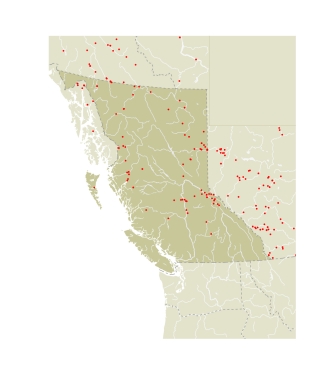At the time the genus Celastrina was named, the name celastrina was used for holly, the larval foodplant of the type species for this butterfly genus (Emmet 1991). The common name "spring azures" reflects the early spring flight period and the azure (blue) wing colour of males of this genus. The name was first used by Gosse (1840) for what is now subspecies lucia of the Boreal Spring Azure.
The genus Celastrina differs from all other blues in the structure of the male genitalia. The labides and vinculum are fused and developed into a broad plate extending to articulate with the valves. The eyes are hairy. Spring azures are the first blues to emerge from the pupa in the spring and are a sure sign that spring has arrived in the northern hemisphere. The genus is Holarctic, with one species across most of Europe and Russia and several in northeastern China and adjacent areas (Eliot and Kawazoe 1983). Until very recently all North American populations were regarded as one species, but Opler and Krizek (1984) recognize three, two of which are found in eastern deciduous forest habitat. Pratt et al. (1994) further defined overlapping subspecies and overlapping races of the three species but did not recognize any additional species. Several North American authors have split off the widely distributed Nearctic species Cladon from the Palearctic species C. argiolus, but the only study to look at the genus as a whole treats argiolus and ladon as one Holarctic species (Eliot and Kawazoe 1983). Observations in BC show that the two "subspecies" of ladon occur together and must be regarded as separate species. The southern C. echo is closer in appearance to C. argiolus from the Palearctic. C. ladon is therefore kept as a separate Nearctic species. Recent unpublished DNA analysis of Pratt and Wright (in prep.) support this split into two species. Thus there are four species in North America and many more in the Palearctic.
|
|
